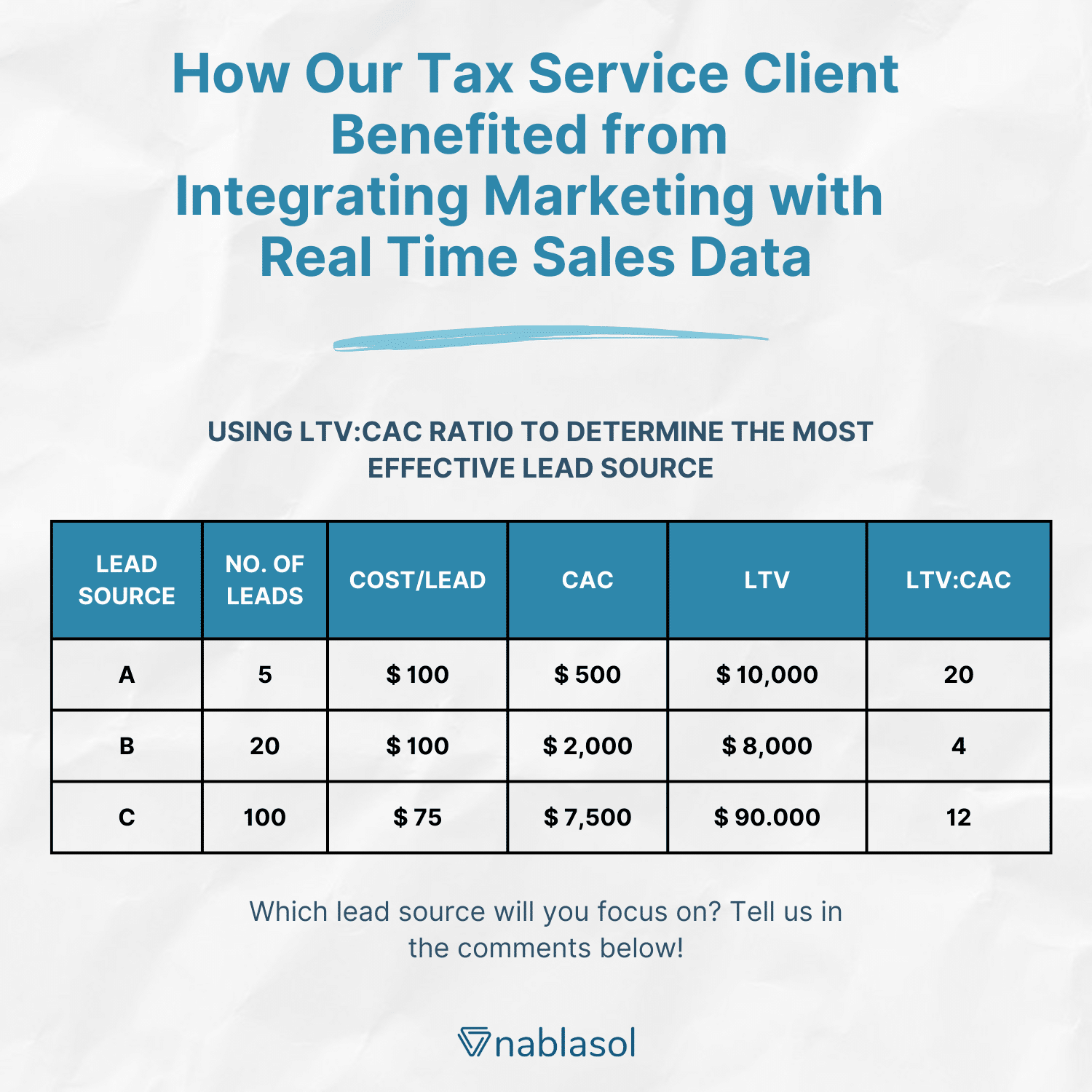Summary
A considerable expense for most businesses is executing marketing campaigns and running sales operations to acquire customers. To be profitable while acquiring customers, it becomes essential to analyze how different marketing channels and lead sources perform.
Our client was a tax industry service-based company with hot and cold leads coming in from more than 100 sources. The challenge was to analyze which lead source was most effective for sales conversions and revenue. We took up the mantle to custom develop an advanced attribution model for our client. The model was fed with real-time sales data to optimize the marketing campaign, analyze marketing performance & increase the ROI.
Business Challenges
Any B2C company has a lead generation strategy to source leads & to educate, nurture and convert their target demographic. Here are some of the various lead sources deployed by our client:-
– Lead Source Providers
– PPC Networks: Google/Facebook/Bing
– Broadcasting: Radio/TV Ads
– Email Campaigns
– Content Affiliates
– Referrals
The lead sources provided different qualities and quantities of leads. It was becoming a task for the client to analyze them. Corroborating the lead status from the sales team to see which ones were more qualified and getting converted quickly was a challenge. The lead sources which generated more revenue had to be optimized. To find that using sales data became a hefty task due to the innumerable and varied sources.
The client’s arrangement varied with their vendors in terms of the finances. Some lead source vendors had a fixed cost per lead, while some charged a fixed weekly commission. Their invoices changed every week, and so did the accounting per lead. The complexity increased as the sales data kept evolving as leads matured in the funnel with time. It became more difficult to find the best marketing channel as time became a parameter.
In terms of PPC, Campaigns, we had to identify keywords that brought in the right leads that generated more revenue. Similarly, we had to identify the optimum radio stations that broadcast the client’s advertisements using the sales data. The challenge was to understand segmented target groups and their tax problems.
Solution Provided
Our client wanted to quantify the marketing performance, so we developed an advanced attribution model and fueled the system with real-time sales data. We also created essential metrics and KPIs based on the data for quickly finding the most effective marketing channels and lead sources.
We had a lot of parameters in the system like cost per lead, total commission, lead qualification factor, Gross Sales Vales, deals approved, deal out, etc. But here, we will discuss the one that helped us identify the best lead source out of hundreds of lead sources.
This unique KPI involved two metrics, LTV and CAC, and represented the ratio of LTV against CAC.
LTV, sometimes called LCV, is Lifetime Customer Value. It is the calculation of net profit generated from a customer over the average length of the relationship with the company.
CAC or Customer Acquisition Cost is the total amount and resources incurred to get an additional customer.
The ratio LTV : CAC represented the quality of marketing channels in terms of sales revenue.
The dynamic chart above determined that Lead Source A is the most effective as with just 5 leads, the client was able to make a $10K revenue. Although the total revenue is low in comparison to Lead Source C, the marketing campaign can be optimized to generate more leads.
Lead Source C provides the most revenue volume but with a large number of leads. Managing more customers becomes capital intensive but the business offering could be optimized to upsell to more services to those leads.
Lead Source B is neither providing revenue volume nor high-quality leads. The marketing budget can be channeled from B to A and C as a result.
The complexities in the situation were brought on by the variable invoicing of multiple vendors and the ever-evolving lead status. Nablasol solved these complexities using a complicated formula that included a cooling-off period for the sales cycle. We created an automated process of the variable invoicing, which was an all-encompassing calculation.
The attribution model helped the marketing team to optimize their PPC campaigns. The model helped create campaign-level as well as keyword-level reports. Similarly, the radio broadcasting stations were optimized for adverts to run at the correct time and context.
Impact on Business
The marketing attribution model we developed was unlike anything seen before. It supported the marketing team immensely with quantifying the performance of the campaigns. It reduced the marketing expense at the same time and improved the conversion rate for the sales team.
Most importantly, it became the singular dashboard for the leadership team to simply decide where to allocate the marketing budget.

